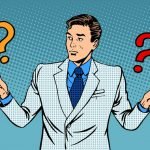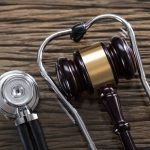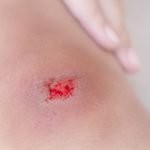What a Pain!
Joseph Kellerstein, DC, ND
As you will see, Joe has been a victim of the finest medical treatment money could buy. Drugs can be a lifesaver, but occasionally those risks we all tend to ignore really happen. When they do, we might sit and wonder: why was it done in the first place?
Medical diagnosis is a godsend. Treatment, however, is sometimes based on concepts that feel barbaric.
Joe’s case is nowhere near cured. I do not mean to present it as a miraculous and complete thing.
These days, we are seeing a worldwide assault on homeopathy especially, but to a lesser degree on all natural medicine. It seems dramatically coordinated with very similar arguments and tactics in the press across the globe.
“Quackbusters” are popular, and again nothing original: just loud and generally obnoxious.
All these folks have a similar approach. Reduce the highly complex to the absurdly simple, twist a few scientific studies to the task, feign some knowledge, and crank up the laryngeal volume. Certainly, some will get scared off the prospect of visiting a quack clinic. Who will argue that this is not a public service?
Public debates are of little use. My brief observations have so far convinced me that each side only preaches to the converted and further entrenches the arguments. No one’s eyes are especially opened. The press is anything but impartial.
The only appropriate field of argument is the individual case. As has always been the case, our grassroots successes are what is necessary.
So, I guess I wanted to tell this story just to demonstrate how valuable and simple our contributions can be. This is a case that a graduate from any of those colleges that still teach some trace of Hahnemann (rare around here) clinically would find easy.
Case Presentation
Joe is a pleasant, easygoing, and very creative guy. One fine day 3 years ago, he experienced tinnitus. Magnetic resonance imaging showed a tumor in the brain. It was diagnosed as benign but possibly enlarging. So far, it is considered inoperable.
Two years ago, a neuropathy developed in both feet. Tingling stinging pains alternated with numbness.
Eight months ago, he began suffering a whopper of a headache (too technical?). The pain just got worse and worse.
As the pain increased, so did the drugs from a skilled neurologist. By late last year, Joe was on an “army” of drugs.
Then another fine day, he found himself in the emergency room needing defibrillation. He spent some quiet time in a coma and on life support for 2 weeks.
Joe was told it was renal failure, possibly precipitated by the medications. Upon recovery, he decided (against medical advice) to discontinue his army of pharmaceutical helpers.
When he woke up each day, so did the pain. It was debilitating, terrible. In the morning, it would be there in his forehead over the left eye. An area above the left eyebrow would pulsate visibly. The pain would ultimately reach the occiput.
Joe said: “The pressure and throbbing make it unbearable.” Shaking his head at all aggravates the pain and leaves a slight cloud of dizziness. Tilting the head in a certain way will make it worse.
If he moves and cracks his neck by accident, the pain is also bad. It feels as if he was struck with a hammer.
Mental pressure makes it worse. He just wants to be left alone with the pain and not bothered. After being assaulted with the headache pain in the morning, Joe finds that there is some improved comfort on sitting up.
Since the renal failure, Joe has experienced a persistent itchiness of the left lower ribs. It worsens when the affected area is touched.
Other left-sided issues include an increased sensitivity of the left clavicle and left knee in the past year. (The tumor is also left-sided.)
Medical History
Joe has had psoriasis since childhood. It begins as a dry patch, which constantly flakes. It can become horrendous with stress, requiring the application of corticosteroid ointments.
He also reports reflux, multilevel spinal fusion in 2003, and depression and insomnia associated with the pains. Although previously warm, Joe notices that his hands have been unusually cold. In general, he is chillier since his emergency adventure.
Joe craves ice cream. He wakes easily from any noise. He is the kind of guy who is always thinking about his next project (artistically and in business).
Treatment Plan
I prescribe Sulphur 30 (1 pellet every other day). In view of his recent drug response, I was feeling intuitively cautious in dosing and so left days in between to allow the patient to discontinue, should an aggravation of any kind appear.
First Follow-up Visit, at 2 Weeks
Two weeks later, Joe reports his pains to be about 25% improved. People around him notice the change in demeanor. He says that coming off pregabalin was “awful” due to shakiness and cramps. He has not needed any acetaminophen.
Joe conveys that the horrible stabbing in his head is much improved. The headaches are still bad in the morning, but he says “For the first time in months, I can be functional!”
All else is the same. Joe is to continue with the treatment plan (perhaps increasing the frequency of posology when improvement plateaus).
Second Follow-up Visit, at 4 Weeks
At 4 weeks, Joe reports: “My energy level is up. I have been unable to go fishing for I don’t know how long, but I now feel able.”
Previously, the pounding of this head in the morning had been unbearable. It is now a dull pain. He says: “The itch that was driving me crazy is gone. The numbness in my feet: I almost have feeling. I stepped on a stone, and the pain just shot through me. It’s the first time in 2 years that I felt something in my feet.” Joe states that he feels warmer.

Conclusion
I have had more follow-up encounters with Joe. He continues to improve and marvels at those little white pills. He eagerly took off for his ice fishing trip and promptly forgot his remedy when packing. He only noted that he had neglected to take his remedy when by day 4 of the trip his headache and tingling of the feet crept back to an uncomfortable degree. On his return home, the symptoms once more improved within 2 days of resuming the remedy.
I think I recall a story about Bernard Shaw, who confronted his allopathic physician with a tale of being helped by a homeopath after a bad response to a drug that the MD had prescribed. The good physician said that any help derived from those little pellets was purely accidental. His medications were “science.”
The response was: “I much prefer the happy accident of homoeopathy to the certain misery of your drugs.”
 Joe Kellerstein, DC, ND graduated as a chiropractor in 1980 and as an ND in 1984. He graduated with a specialty in homeopathy from the Canadian Academy for Homeopathy, and subsequently lectured there for two years. He also lectured in home-opathy for several years at CCNM; for eight years at the Toronto School of Homeopathic Medicine and for two years at the British Institute for Homeopathy. Dr. Kellerstein’s mission is the exploration of natural medicine in a holistic context, especially homeopathy and facilitating the experience of healing in clients.
Joe Kellerstein, DC, ND graduated as a chiropractor in 1980 and as an ND in 1984. He graduated with a specialty in homeopathy from the Canadian Academy for Homeopathy, and subsequently lectured there for two years. He also lectured in home-opathy for several years at CCNM; for eight years at the Toronto School of Homeopathic Medicine and for two years at the British Institute for Homeopathy. Dr. Kellerstein’s mission is the exploration of natural medicine in a holistic context, especially homeopathy and facilitating the experience of healing in clients.









